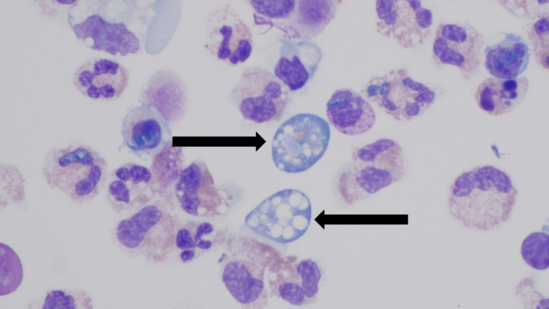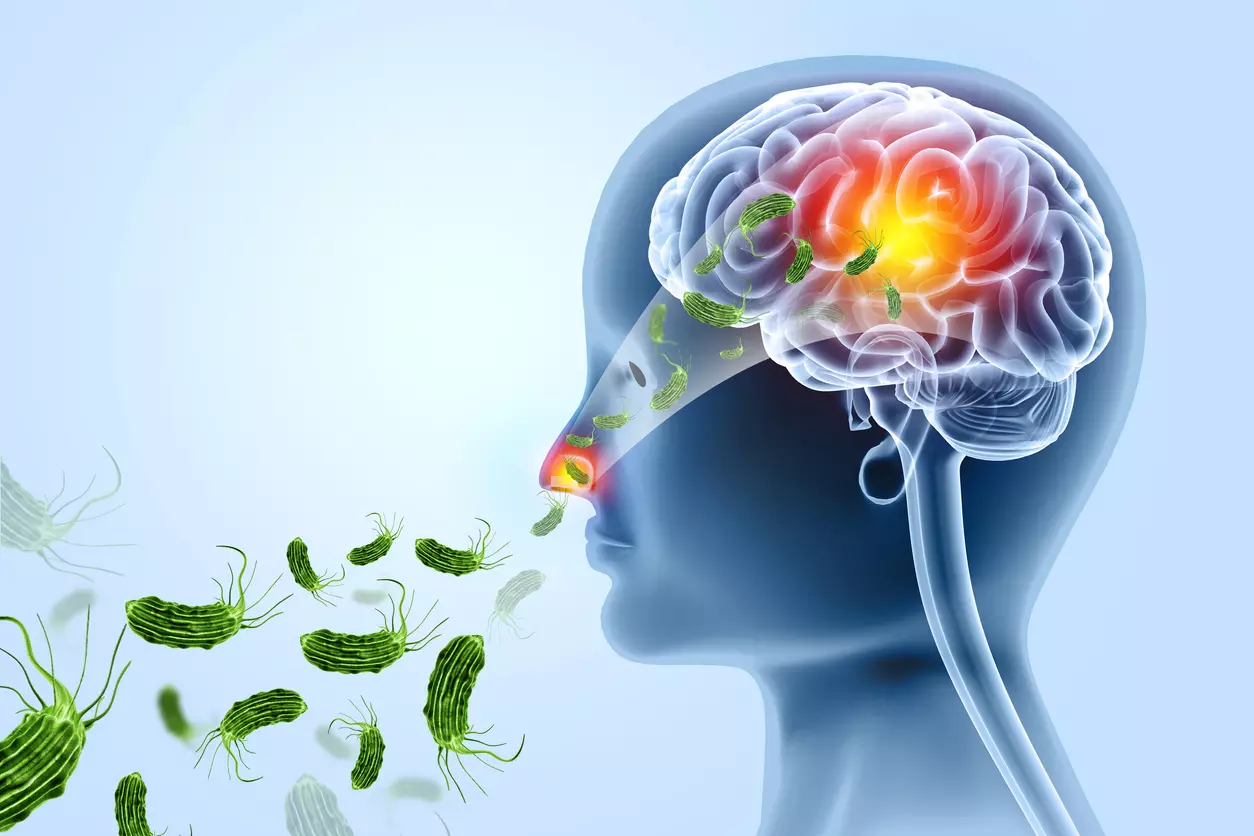Introduction
Imagine diving into a warm lake on a hot summer day, only to discover later that a microscopic organism may be eating away at your brain. Sounds like science fiction, right? Unfortunately, this terrifying scenario is real, caused by a rare but deadly microorganism known as the brain-eating amoeba.This blog reveals six shocking truths about this silent killer—scientifically known as Naegleria fowleri (Brain Eating Amoeba)—including how it infects the brain, how it spreads, and how you can protect yourself from it. Let’s dive in.
🦠 Scientific Classification
- Name: Naegleria fowleri
- Domain: Eukaryota
- Type: Amoeba (a single-celled organism)
- Family: Vahlkampfiidae
- Class: Heterolobosea

1. What Exactly Is the Brain-Eating Amoeba?
Naegleria fowleri is a free-living, single-celled amoeba found in warm freshwater environments such as lakes, hot springs, rivers, and even inadequately chlorinated pools. It belongs to the class Heterolobosea and thrives in water temperatures above 30°C (86°F). In some extreme cases, it can even survive up to 46°C (115°F).
While it usually feeds on bacteria in the environment, when it enters the human body through the nose, it can cause a rare and often fatal brain infection.
2. Life Cycle of Naegleria fowleri (Brain Eating Amoeba): A Killer in Three Forms
The amoeba has a complex life cycle with three distinct forms:
- Cyst Stage (Protective Mode):
This is its survival form, protecting the amoeba in cold or dry conditions. It becomes dormant but remains alive. - Trophozoite Stage (Active & Dangerous):
This is the form that infects humans. It moves using pseudopodia (false feet) and feeds on brain tissue once inside the body. - Flagellate Stage (Swimming Mode):
When placed in water with low nutrients, the trophozoite transforms into a flagellated form with whip-like tails that help it move quickly.
Only the trophozoite form is infectious and responsible for brain damage in humans
3. How Brain Eating Amoeba Infects and Destroys the Human Brain
Infection occurs when contaminated water enters the nasal passages, usually during swimming or diving. Brain Eating Amoeba then migrates through the olfactory nerve, which connects the nose to the brain. Once in the brain, it triggers Primary Amebic Meningoencephalitis (PAM)—a rapidly progressing disease that destroys brain tissue and causes severe inflammation.
Victims often suffer from massive brain swelling, neurological damage, and ultimately death usually within a week of symptoms appearing.
4. Symptoms and Rapid Progression
The initial symptoms of PAM may resemble those of viral meningitis, making early detection difficult. These usually begin 1 to 12 days after exposure and progress quickly.
Early Symptoms:
- Severe headache
- Fever
- Nausea and vomiting
Later Symptoms:
- Stiff neck
- Confusion or hallucinations
- Seizures (sudden, uncontrolled electrical disturbances in the brain that can cause changes in behavior, movements, feelings, or consciousness)
- Loss of balance
- Coma
Once symptoms start, death typically occurs within 5 to 7 days, making fast diagnosis critical.
5. Diagnosis: How Is the Infection Detected?
Diagnosing PAM is challenging because the early signs mimic more common illnesses. Doctors usually perform a lumbar puncture to collect Cerebrospinal Fluid (CSF), looking for:
- Elevated white blood cell count
- Low glucose levels
- Presence of an amoeba under the microscope
Advanced tests may include:
- PCR (Polymerase Chain Reaction): Detects amoeba DNA.
- Immunofluorescence assays: Use fluorescent antibodies to highlight the organism.
- Amoeba culture: Growing the organism in lab conditions.
Unfortunately, by the time diagnosis is confirmed, the disease is often too advanced for effective treatment.
6. Cure and Treatment Options: A Race Against Time
There is no guaranteed cure for PAM, but aggressive treatment may offer hope, especially if started very early.
Commonly Used Medications
- Amphotericin B: An Antifungal that kills the amoeba directly.
- Miltefosine: Originally used for parasitic infections; shows promise against PAM.
- Rifampin and Azithromycin: Antibiotics that may help limit secondary infections.
- Fluconazole and Dexamethasone: Help reduce inflammation and brain swelling.
In rare cases, combining medication with therapeutic hypothermia (cooling the body to reduce brain swelling) has led to survival. But these cases are extremely rare, with a survival rate of less than 3% globally.
7. Look at the Texas Case: A Warning for All
This tragic case involved a 71-year-old woman who stayed at a campground in Texas with an RV that used tap water for sinus rinsing. Health officials later confirmed the presence of Brain Eating Amoeba in her cerebrospinal fluid. The woman had no history of swimming in lakes or rivers, highlighting that the infection occurred through nasal rinsing with contaminated tap water in the RV.
Officials believe that the amoeba may have entered through the water system of the RV, which possibly was not adequately sanitized or disinfected. This case is particularly alarming because it shows that Brain Eating Amoeba infections are not limited to natural freshwater sources, but can also occur in man-made water systems when proper maintenance is lacking.
Even after testing, the water from the RV and campground did not show the amoeba, which shows how hard it is to find where it came from. The woman got sick very fast—she started feeling symptoms 4 days after using the nasal rinse and died 8 days later. This shows how quickly the infection can get worse and why it’s very important to prevent it and find it early. To know more about this case read here.
Who Is at Risk?
While anyone can be exposed to Brain Eating Amoeba, certain people are more vulnerable:
- Swimmers in warm freshwater lakes or rivers
- Users of neti pots or nasal rinses with unsterilized tap water
- Children and teens, due to frequent water play
- People living in hot and humid climates
How to Stay Safe
While rare, PAM is nearly always fatal—so prevention is your best defense.
Safety Tips:
✅ Avoid swimming in warm freshwater during hot weather.
✅ Use nose clips or keep your head above water when swimming
✅ Keep pools and hot tubs properly disinfected and chlorinated.
✅ Clean water storage tanks regularly.
✅ Don’t disturb sediment at the bottom of lakes or rivers.
✅ Never use tap water for nasal rinsing unless –
- It is boiled for at least one minute and cooled
- Or is distilled or sterile
Final Thoughts
The Brain Eating Amoeba (Naegleria fowleri) is tiny and hard to see, but the damage it causes can be deadly. Although infections are very rare, they usually result in death, so it’s important to stay informed and take precautions. By learning how Brain Eating Amoeba works and following some easy safety steps, you can keep yourself and your family safe while enjoying time in the water during summer.
Want to read about healthy foods ? click here

